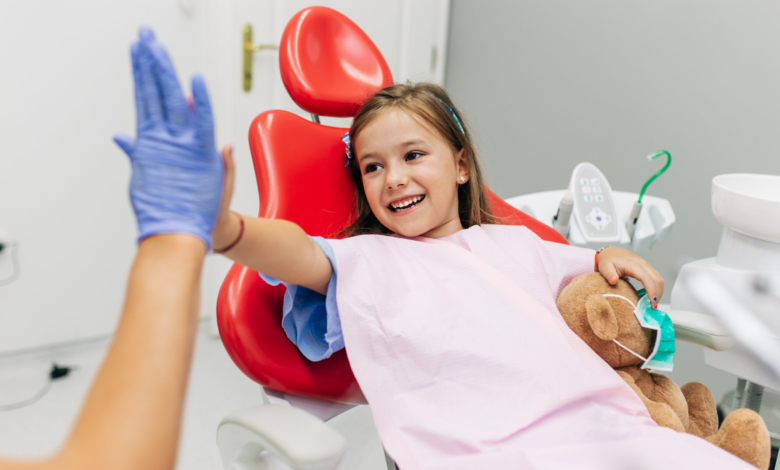Dealing with Pediatric Dental Anxiety: Tips for Parents and Dentists

Dealing with pediatric dental anxiety requires a collaborative effort between parents and dentists to ensure a positive and stress-free experience for children. This intro explores effective strategies for both parties to alleviate dental fears in young patients. Parents play a crucial role in preparing their children by fostering a positive attitude towards dental visits and openly discussing the process.
Meanwhile, dentists can employ child-friendly approaches, creating a welcoming environment that minimizes anxiety triggers. This guide delves into communication techniques, distraction methods, and the use of technology to make dental appointments more comfortable for children. By combining parental support with dentist sensitivity, we aim to empower families and practitioners alike in navigating pediatric dental anxiety for healthier smiles and happier visits.
Below we discuss how to deal with pediatric anxiety. Kindly contact a Pediatric Dentist Scottsdale for more information.
Open Communication and Education
One of the primary steps in addressing pediatric dental anxiety is fostering open communication between parents, children, and dentists. Parents should discuss dental visits positively, emphasizing the importance of oral health without creating unnecessary fear. Introducing children to the dentist’s role and the procedures they may undergo can demystify the experience.
Dentists can aid this process by using child-friendly language and visuals, ensuring that the environment is perceived as friendly rather than intimidating. By creating an open dialogue, parents and dentists can collaboratively work towards building a foundation of trust and understanding.
Early Exposure and Familiarization
Exposure to the dental environment at an early age can significantly reduce anxiety. Parents are encouraged to bring their children to the dentist for routine check-ups from a young age, even before any treatment is necessary.
These early visits serve as an opportunity for children to familiarize themselves with the dental setting, meet the dentist, and experience a positive encounter. Dentists, in turn, can focus on establishing rapport during these initial visits, making the subsequent appointments less anxiety-inducing. Familiarization helps children view dental visits as a routine part of their healthcare, minimizing apprehension.
Distraction Techniques and Comfort Measures
Dentists can employ distraction techniques to ease anxiety during procedures. Child-friendly distractions, such as interactive toys, movies, or music, can divert a child’s attention away from the dental work. Establishing a calming environment through soothing colors and comforting décor also contributes to a positive experience.
Parents can collaborate by bringing comfort items from home, like a favorite toy or blanket, providing an additional source of reassurance. Creating a relaxed atmosphere within the dental office helps children associate the space with comfort rather than fear, contributing to a more positive dental experience.
Positive Reinforcement and Reward Systems
Positive reinforcement is a powerful tool in managing pediatric dental anxiety. Both parents and dentists can implement reward systems to motivate children during and after dental appointments. Simple praise, stickers, or small rewards for cooperative behavior create a positive association with dental visits.
Dentists can engage children in the decision-making process, allowing them to choose a reward after the appointment. Parents, in turn, can extend this positive reinforcement by celebrating their child’s bravery and cooperation. This collaborative approach encourages a sense of accomplishment and transforms dental visits into positive, confidence-building experiences.
Final Thoughts
By incorporating these collaborative strategies, parents and dentists can create a supportive environment that addresses pediatric dental anxiety, promoting better oral health and well-being for children.




